“ALL OUR WARNINGS FELL ON DEAF EARS and we predicted that a catastrophe like this was inevitable and just a matter of time,” a residents’ group said angrily today as a blaze described by officials as unprecedented engulfed their 24-storey apartment block overnight in Kensington, London.
An unknown number of fatalities have been confirmed after the massive fire ripped through the recently refurbished west London building, starting just before 1am today, trapping residents inside as 250 firefighters tried to battle the blaze.
Eyewitnesses reported horrific scenes of people jumping from windows and throwing children to safety in an incident called “unprecedented” by London Fire Commissioner Dany Cotton, who said in a statement this morning: “In my 29 years of being a firefighter I have never ever seen anything of this scale. Firefighters are working very hard at the moment,” newspaper The Guardian reported.
Around 50 people so far have been taken to hospital after the fire, but many are feared still inside the Grenfell tower at the Lancaster West Estate in Kensington, which contains around 120 apartments, home to an estimated 600 people.
A residents’ group at the tower, which is owned by the local authority, today used its website to call attention to its repeated warnings over four years over how the authority’s property management group has treated fire safety issues.
“ALL OUR WARNINGS FELL ON DEAF EARS and we predicted that a catastrophe like this was inevitable and just a matter of time,” writes the Grenfell Action Group on the latest blog, which contains links to 10 blogs complaining about fire safety dating back to 2013.
Concern has focussed on advice apparently given to residents stay in their flats if fire broke out.
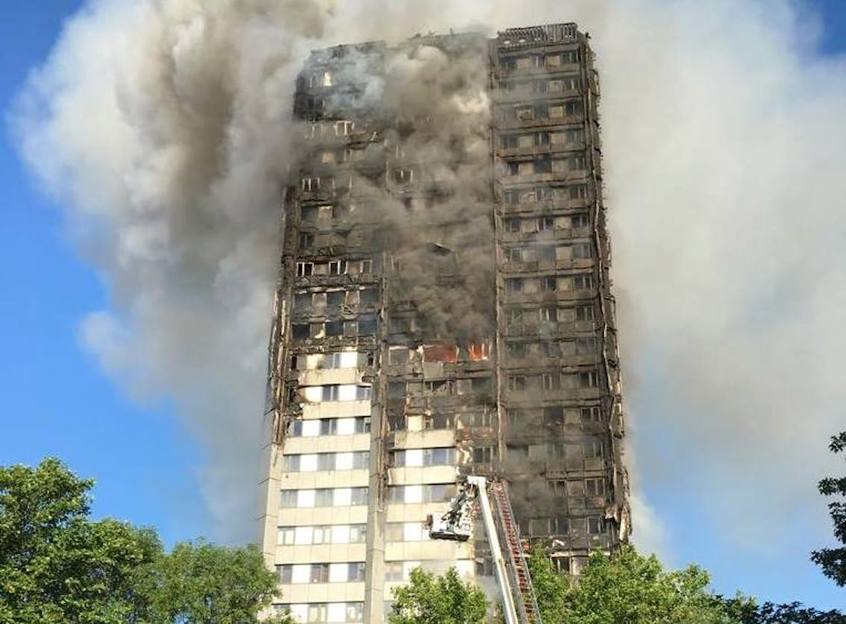
Grenfell Tower contains around 120 apartments, home to an estimated 600 people (London Fire Brigade via Twitter)
A blog posted in November 2016, said: “In the last twenty years and despite the terrifying power surge incident in 2013 and recent fire at Adair Tower, the residents of Grenfell Tower have received no proper fire safety instructions from the KCTMO [Kensington and Chelsea Tenant Management Organisation].
“Residents were informed by a temporary notice stuck in the lift and one announcement in a recent regeneration newsletter that they should remain in their flats in the event of fire. There are not and never have been any instructions posted on the Grenfell Tower noticeboard or on individual floors as to how residents should act in the event of a fire.”
The fire investigation will include an examination of the role that the cladding may have played in the spread of the fire.
Eyewitnesses reported seeing the building’s new cladding burning “like a matchstick”. A man who escaped from the 17th floor with his aunt said: “The cladding was flammable, it just caught up like a matchstick,” Channel 4 News reported, according to The Guardian. The man also said he heard no fire alarms.
A refurbishment of Grenfell Tower was completed in July last year by Rydon Group, a contractor based in East Sussex.
On its website Rydon said: “The £10m project included extensive remodelling of the bottom four floors creating nine additional new homes, improved communal facilities for the residents, and improved spaces for two local businesses.
“Externally, rain screen cladding, replacement windows and curtain wall façades have been fitted giving the building a fresher, modern look. All of the remodelling & refurbishment works were completed with residents still in occupation on the upper twenty floors.”
Cladding subcontractor Harley Curtain Wall went into administration shortly after completing the Grenfell Tower project.
Top image: Fire engulfs Grenfell Tower, a residential block, on 14 June 2017 in west London
Comments
Comments are closed.





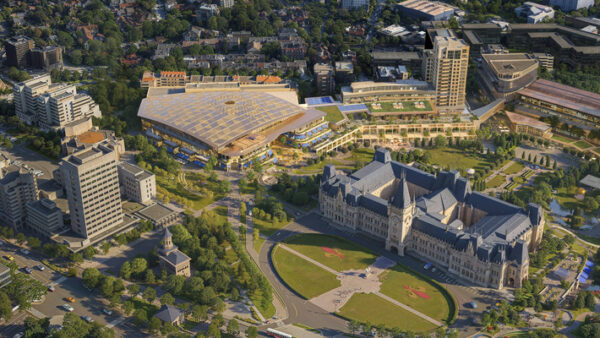
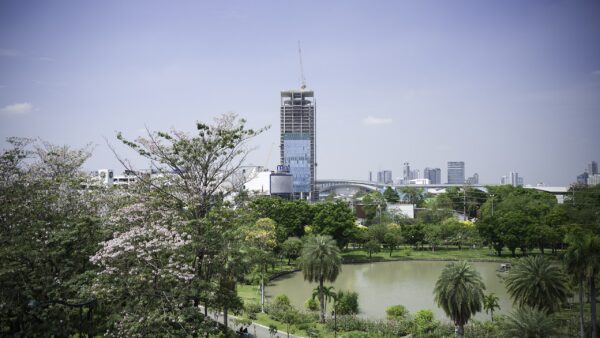

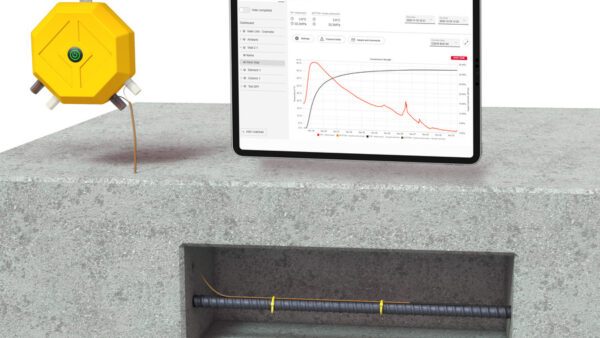
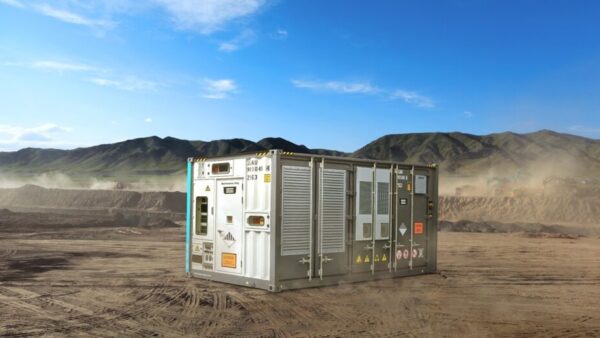
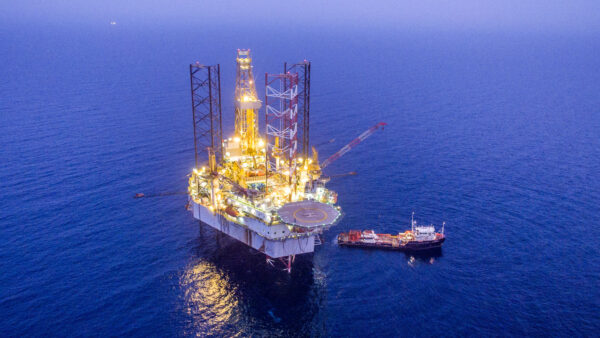
I will start by saying My thoughts are with all those effected by the tragedy in London today.
A few thoughts. On domestic buildings it is within the regs to fit cavity barriers ( for fire ) around all opening ( within Scotland I beleave ENGLAND don’t require quite as many as Scotland do but still at openings) is there not any requirements for cavity barriers to be fitted within cladding systems? If not the chimney effect would be emense due to the vents at top and bottom of the cladding. Creating the perfect route for the spread of flames… secondly in a previous comment it was said that the cladding is tested from external flame ? Does anyone know if this is correct ? .
Thirdly how could building control possibly not of insisted on a fire suppression system being installed during the 2015/2016 building upgrade. Due to the fact there is only 1 stair case with compartmenation in the block surely to comply with current section 2 of the technical handbook. Surely a fire suppression system would of brought the building up to standards by using other means to prove compliance..
Lastly from what has been seen in these fires on renovated buildings with cladding /rainscreen cladding systems these fires show that by installing these systems then the compartmentation of the building is no longer in place could this be a factor that has been over looked in the fire safety report .we will need to wait and see.
Thanks for reading this any replies or suggested forums or articles greatly received. As I am currently applying to companies for assistant site Manager jobs and want to ensure I am fully upto date with all aspects of the trade.
Reactional comment upon this disaster is simply not good enough. A failure of professional competence upon inspectors and specifiers is to blame.
It will be interesting to hear what the Building Research Establishment says about the suitability of the cladding.
There is no doubt that the rapid spread of fire has been through the spandrel panels between floors. The facade fires in Dubai, Melbourne and London are all related to the use of this Chinese made panel. Just because supply comes out of a country which normally supplies reliable products does not mean that the product was made in that country. This particular panel should be banned worldwide.
When I still work the switch from rock wool, part on health and safty grounds, to celular plastic materials was causing concern. A recent fire in Dubai and last night’s fire in London manufacturers and sell unsuitable insulation products. And wosrst still Architects and Engineers are specifying and approving their use.
R. Elven Msc Bsc hons MCIOB
Had a session with H&S students 4 weeks ago studying Dubai high rise fire last new Year’s eve. Students explored possible spread of fire from video and concluded external cladding possibly the cause.
Checked possible causes of cladding burning and spreading the fire (Metal non combustible ?). Discussed chimney effect. Checked if burning could occur between the skins. Found Americans think although panels meet fire requirements externally across faces, if insulation internally can start the burn it could spread. Our consensus was that perhaps due to high temp of electrical fault to start the burning process of the insulation and the fire could rapidly spread upwards between the inner and outer skins using the chimney effect to cause acceleration and temp rise which would cause the aluminum skins to burn. The gap between the cladding and the external face of the existing building will also add to the chimney effect and the heat of would break through into the interior of the building.
I will bet my last penny that this was a curtain wall/cladding related fire; simply because the materials used are not suitable for the application. Nothing less than a material that can resist 1200c fire should be used for cladding, or none at all. I have lived through a cladding induced fire in Saudi Arabia, so I knows it and I grows it!!
Whilst an investigation will review several factors not least design and specification /selection of facade materials (something currently extensively debated on many refurbishment schemes of this type). What would the outcome be had sprinklers been installed if only to communal areas and protected stairwells? A controversial issue recently debated by devolved administrations and applied in Wales for certain types of building. Lessons learned, guidance and Building Regulations need to pick up improvements if needed very quickly.